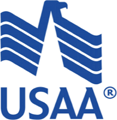Promoting Healthy Workplaces
Project Aim
Supported by the Robert Wood Johnson Foundation (RWJF), the “Promoting Healthy Workplaces” aims to expose business leaders to the benefits of workplace health promotion programs. Here, we share detailed examples of successful workplace health promotion programs and offer insights into the “secret sauce” that facilitates successful program implementation.
Our Stories
Our stories are based on site visits to nine companies with exemplary programs, roundtable discussions with subject matter experts in the operational aspects of workplace health promotion programs, and updated literature review of best practices.
Extraordinary Workplace Wellness Programs
The Companies
Below is the final list of companies that we visited. Click on each company name to learn more about each of their workplace health promotion programs.
Selecting Case Studies
A preliminary list of 22 organizations was drawn from recent winners of the C. Everett Koop National Health Awards and other brainstorming on companies known to have comprehensive workplace health promotion programs in place that fit with the selection criteria (see table below). In order to narrow down the list to nine sites, we presented the list to subject matter experts during our Roundtable Discussions to elicit their feedback. The final nine sites selected included companies that were both interested and available during the site visit time window.
|
CRITERIA |
|
|
Effectiveness |
Programs should have demonstrated effectiveness (e.g., award winners) |
|
Program age |
Minimum 3 years |
|
Size |
Mix of small/medium (<5000) and large (>5000) |
|
Business type |
Private sector |
|
Industry type |
A mix |
|
Program design |
Programs that exemplify key program features/trends, e.g., creating healthy company cultures, creative use of incentives, tailoring to special groups (ESL, shift workers, off-site workers); also programs that have overcome challenges |
|
Region |
A mix
|









